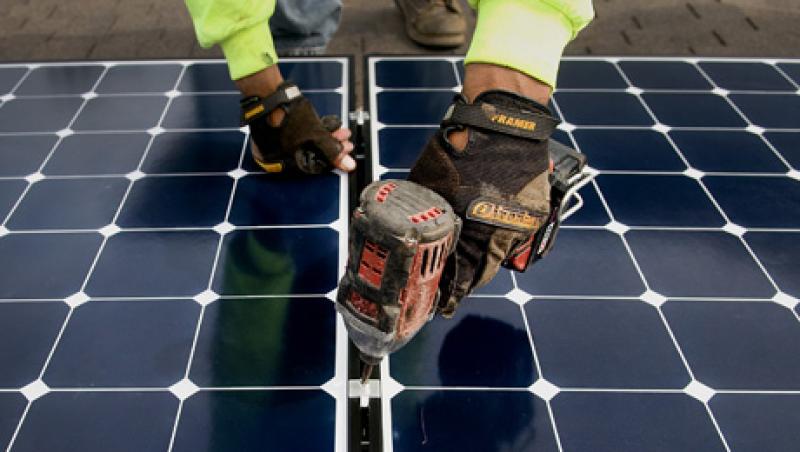
Andres Quiroz, an installer for Stellar Solar, secures a solar panel during installation at a home in Encinitas, California, U.S., on Wednesday, Aug. 15, 2012. Stellar Solar installs residential and commercial solar panels in the San Diego area. Photographer: Sam Hodgson/Bloomberg *** Local Caption *** Andres Quiroz
Sam Hodgson/Bloomberg

